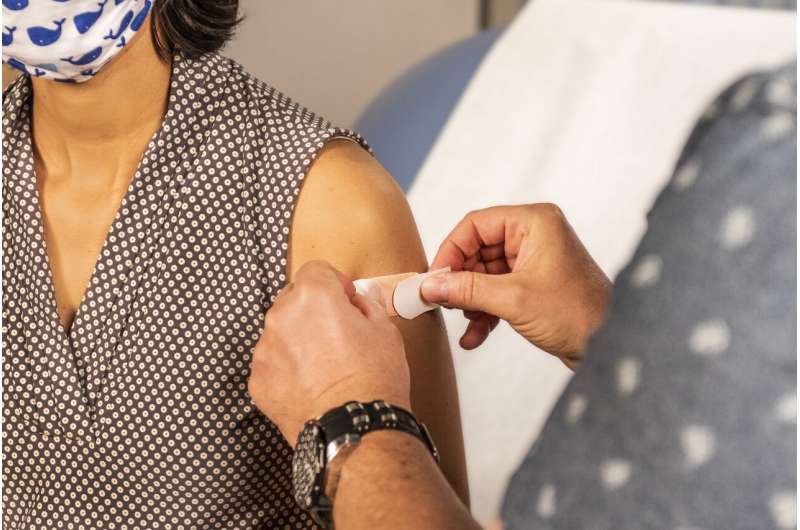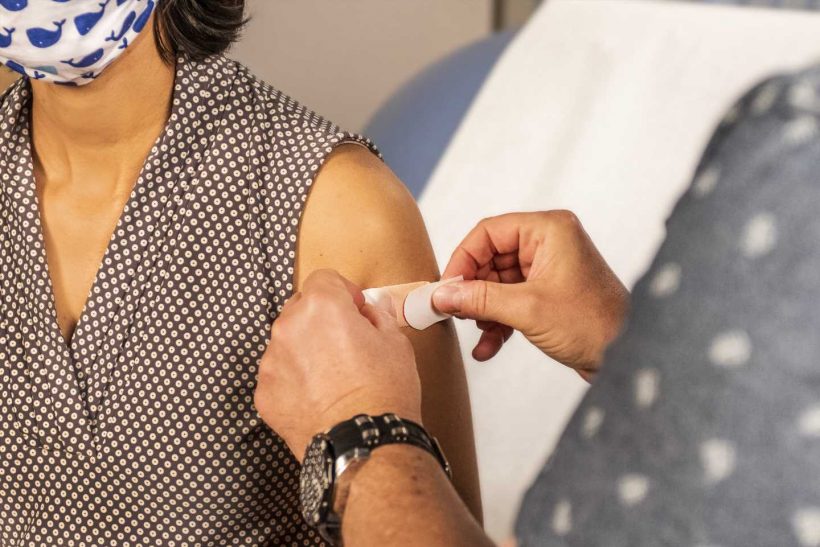
When the mRNA COVID-19 vaccines were first unveiled in December 2020, medical experts touted the benefits of this new technology, saying formulations could easily be tweaked someday to match a quickly changing virus. That day has finally come.
In early September, the Food and Drug Administration (FDA) authorized—and the Centers for Disease Control and Prevention (CDC) recommended—two updated boosters. The boosters target two omicron subvariants, BA.4 and BA.5. These are by far the most contagious versions of SARS-CoV-2 to date, with BA.5 accounting for nearly 90% of cases in the United States.
While the original mRNA coronavirus vaccines have proven effective at preventing death and severe disease from COVID-19, breakthrough infections and reinfections have become more common in the face of an evolving virus.
The boosters (one from Pfizer-BioNTech for ages 12 and up; the other from Moderna for ages 18 and up) are authorized under an FDA emergency use authorization (EUA).
We asked Yale Medicine infectious diseases experts to answer common questions about these new, reformulated boosters.
How is this booster different?
The new booster is a bivalent vaccine, which means it contains two messenger RNA (mRNA) components of the coronavirus. Half of the vaccine targets the original strain, and the other half targets the BA.4 and BA.5 omicron subvariant lineages, which are predicted to continue circulating this fall and winter.
How do we know the booster is safe?
The vaccines were authorized by regulators based on safety and effectiveness data from the original COVID-19 mRNA vaccines, as well as trials of the new formulation in mice. Regulators also took into account data from human trials by Pfizer and Moderna of a similar reformulation, aimed at a previous version of omicron, BA.1.
Why weren’t these omicron boosters tested in humans?
There wasn’t enough time. Human trials of this specific omicron booster only recently began in adults, and results aren’t expected until about November. But since the virus is changing so quickly, federal officials say that data would be outdated by the time results could be delivered to the FDA.
“The flu vaccine is reformulated each year, based only on animal studies for the same reason,” says Scott Roberts, MD, a Yale Medicine infectious diseases physician. “We do an annual flu vaccine update based on the circulating strains of the flu, and unfortunately, we can’t wait on human data because we might not get that until November or December, well after many of us have been infected.”
But isn’t our understanding of COVID-19 and flu different?
While Dr. Roberts concedes that COVID-19 is a new virus with a new vaccine technology (compared to flu), he points out that the biggest safety concern to emerge from the mRNA COVID-19 vaccines is myocarditis, or inflammation of the heart muscle. Myocarditis has been reported as a very rare side effect of the mRNA COVID-19 vaccines. This safety concern did not emerge until after clinical trials were completed and the vaccines were administered to the general population, says Thomas Murray, MD, Ph.D., a Yale Medicine pediatric infectious diseases specialist.
“We have given millions of doses of this vaccine with this technology, and the safety profile has been excellent. And we’ve had human trials for the omicron BA.1 vaccine with no safety concerns,” Dr. Murray says. “We have no reason to believe that these variant vaccines would be any different. We are just changing the vaccine a little bit so that it better matches the strains that are circulating, which is exactly what we do with the influenza vaccine.”
How will we know if the boosters are effective?
We won’t have definitive answers on how well the new bivalent boosters prevent infection or provide long-term immune protection until the human trial data is completed and the vaccine is used widely in eligible people. The FDA based its decision to authorize the bivalent vaccine on safety and effectiveness data from both of the monovalent mRNA vaccines.
They also took into account safety and immune response data from clinical studies of the BA.1 bivalent COVID-19 vaccines, which are similar to the new BA.4/BA.5 bivalent boosters. Those studies, conducted by Pfizer and Moderna, showed the BA.1 bivalent vaccines induced a strong antibody response to both the original strain and BA.1. The companies also said that although the BA.1 vaccines prompted significant antibody responses against BA.4 and BA.5, they were not as strong as they were against BA.1.
Pfizer and Moderna have only submitted mouse data for the BA.4/BA.5 boosters. Although not released publicly, Pfizer shared preliminary findings at a June FDA advisory meeting; the findings included eight mice that were given the BA.4/BA.5 booster as their third dose. Those mice, compared with the mice given the original vaccine, showed an increased antibody response to all omicron variants tested.
When should you get the new booster?
The CDC recommends the new vaccine as a single booster dose at least two months following your most recent COVID-19 vaccine (whether it was completing two doses of a primary series or a booster). The old, monovalent boosters have been suspended and are no longer available to anyone except children under age 12, who are not yet eligible for the new booster.
Should you wait longer than two months between boosters?
The FDA set the minimum wait time at two months. But some advisers to the CDC said it may be better to wait longer. Some health experts have suggested that more time between boosters—up to six months—might be preferred.
That’s because someone who recently got a booster already has more virus-fighting antibodies in their bloodstream. Antibodies gradually wane over time, and another shot too soon won’t offer much extra benefit.
Should you get a booster if you recently had COVID?
According to the CDC, if you recently had COVID-19, you may consider delaying your next vaccine dose by three months from the date your symptoms started—or, if you had no symptoms, when you first received a positive test. Studies have shown that increased time between infection and vaccination may improve your immune response.
Reinfection, although possible, is also less likely in the weeks to months after infection. However, certain factors, such as personal risk of severe disease and local COVID-19 community level, could be reasons to get a vaccine sooner rather than later.
Is there a difference between the Pfizer and Moderna boosters?
“There is not a significant difference between the two. Some studies have shown a benefit to changing vaccines, so there’s nothing wrong with starting with a Pfizer primary series and then switching to a Moderna booster—or vice versa,” Dr. Roberts says.
When might omicron-specific boosters be authorized for younger kids?
“It’s possible the Pfizer vaccine will be available for children at some point this winter,” says Dr. Murray.
According to Pfizer, the company plans to submit an EUA application for an omicron bivalent vaccine for ages 5 through 11 in early October. The company is also working toward preparing an application for a bivalent vaccine for children ages 6 months through 4 years.
Can you get the new COVID booster at the same time as the flu vaccine?
Yes, it’s fine to get the flu vaccine—as well as any other vaccine—and the new booster at the same time, Dr. Murray says.
“Historically, we try to time the flu vaccine for October to maximize immunity when the flu peaks in the winter,” Dr. Roberts says. “But the flu season has been changing in the past few years, which means predictions will be much harder this year.”
Dr. Murray agrees. “Unfortunately for the flu shot, you never know the best time to get vaccinated until after flu season,” he says. “But we do have influenza circulating now in the community. So, it’s a good idea not to wait too long.”
Should you even get a booster?
It’s really a personal decision, say the doctors.
“If you haven’t been boosted in the last couple of months, this is a great opportunity to be better protected,” Dr. Murray says. “Deciding on timing has a lot to do with your own health profile as well as that of those around you. If you’re with people who could become quite sick if you transmitted it to them, even if you had mild disease, that is something to consider.”
Source: Read Full Article
